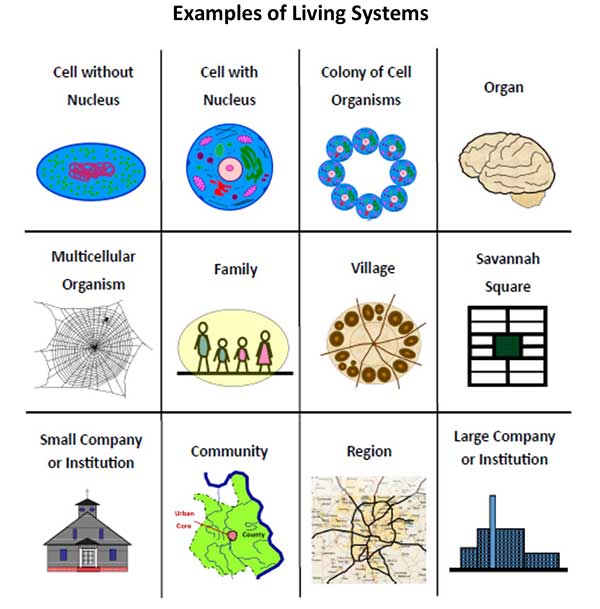 P.O. Box 941120 , Maitland , FL 32794-1120
P.O. Box 941120 , Maitland , FL 32794-1120 dmarks@cfl.rr.com
dmarks@cfl.rr.com  407.694.7040
407.694.7040
Cells, organs, organisms, and community of organisms, are basically containers of life, within larger containers of life. At all scales of life, living systems need to deal with basically the same issues; issues such as protection, resource capture, awareness, integration, care, growth and development, and reproduction.
At the scale of a single-celled organism, the cell must perform all the functions required by that organism. But as the living systems become more complex, such as a multicellular organism, the cells start to specialize, taking on different functions. Ultimately the cells evolve into organs and organ systems, and larger organisms. At increasing scales, living systems develop new emergent properties. These emergent properties are processes that solve developing problems, helping to stabilize their system. Emergent properties are new centers of activity that emerge out of these new scales of organization. Examples of emergent properties are; the nucleus in a cell, organs in an organism, care and love in a family, a leader in a village, companies and institutions with specialized functions within a community.

Living systems have similar functions at different scales. Think about the living systems of the human body, it is the ecosystem onto itself, it is a complex web of activities. The human body consists of about 100 trillion cells. The body must care for these cells, meeting all their needs throughout their lifecycles. The body must also stabilize its internal environment, so its cells can properly carry out their required functions, and in turn the cells help stabilize the body’s other systems by preforming their required jobs. It is a circular process.
What are some of the emergent properties of community? A community should function like a large family, providing; care, protection, resources, and education. These qualities should be represented by emergent organizations in the community such as; government providing services, schools providing education, churches providing care and meaning, and companies providing jobs, along with goods and services. The community should create a network of relationships that are like what occurs within a family or small village, but at a larger scale.
The community should create an interdependent system that self-organizes. Leadership and needed institutions should emerge from within the community. This environment should help all the members of the community fulfill their needs and potential. They should be able to meet their basic needs for shelter, water, and food, and it should help them to meet their social needs. Status and prestige should be created through their roles in the community. Ultimately all the members of the community should be governed by its shared values.
One of the major challenges for communities today is that decisions that affect them are being made by forces outside of their control. These forces include national government, large corporations, and large institutions. While these systems should be helping to solve problems in their underlying communities, many of these forces are showing a lack of caring, or worse, they are exploiting these underlying communities for their own gain.